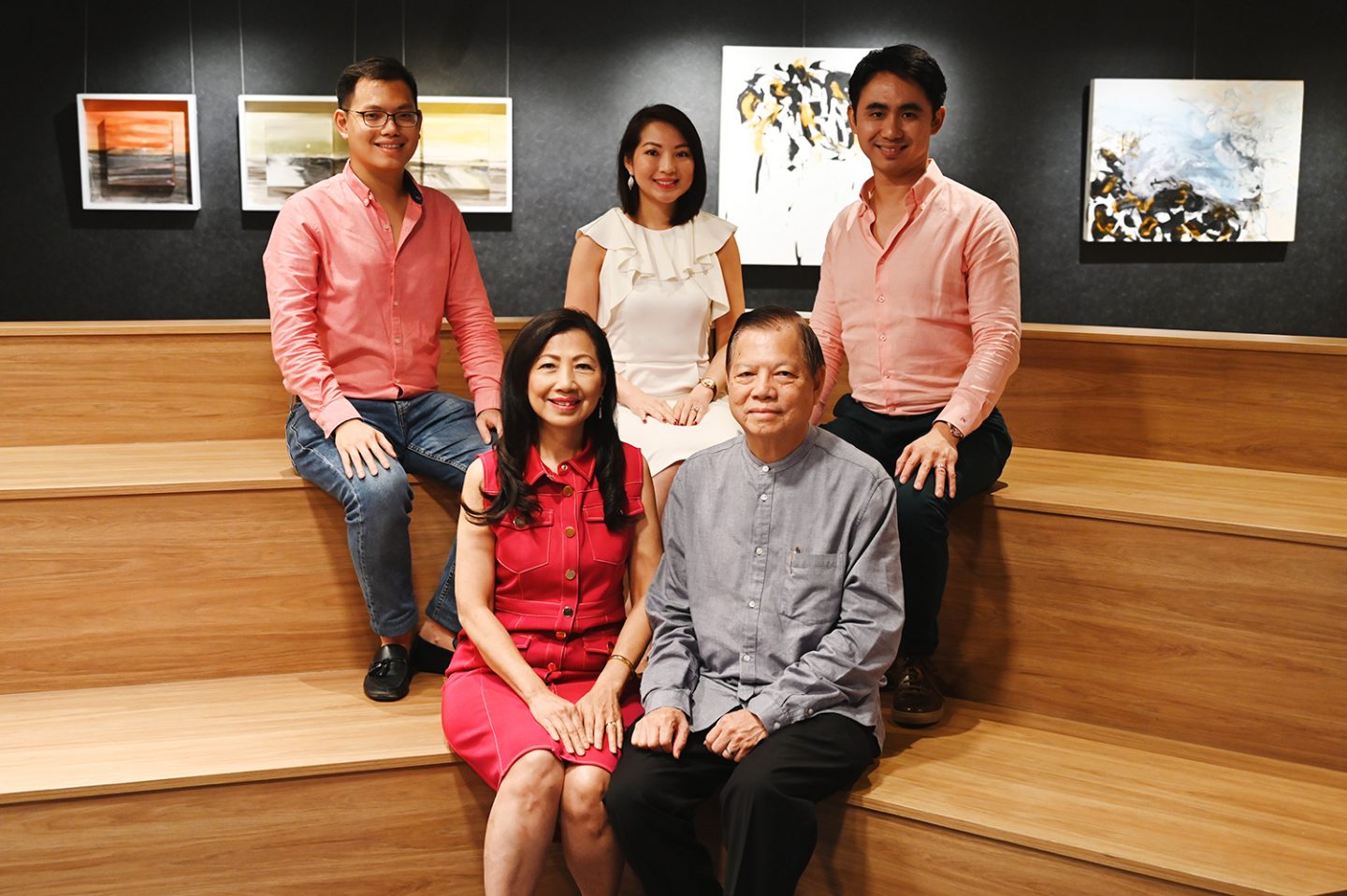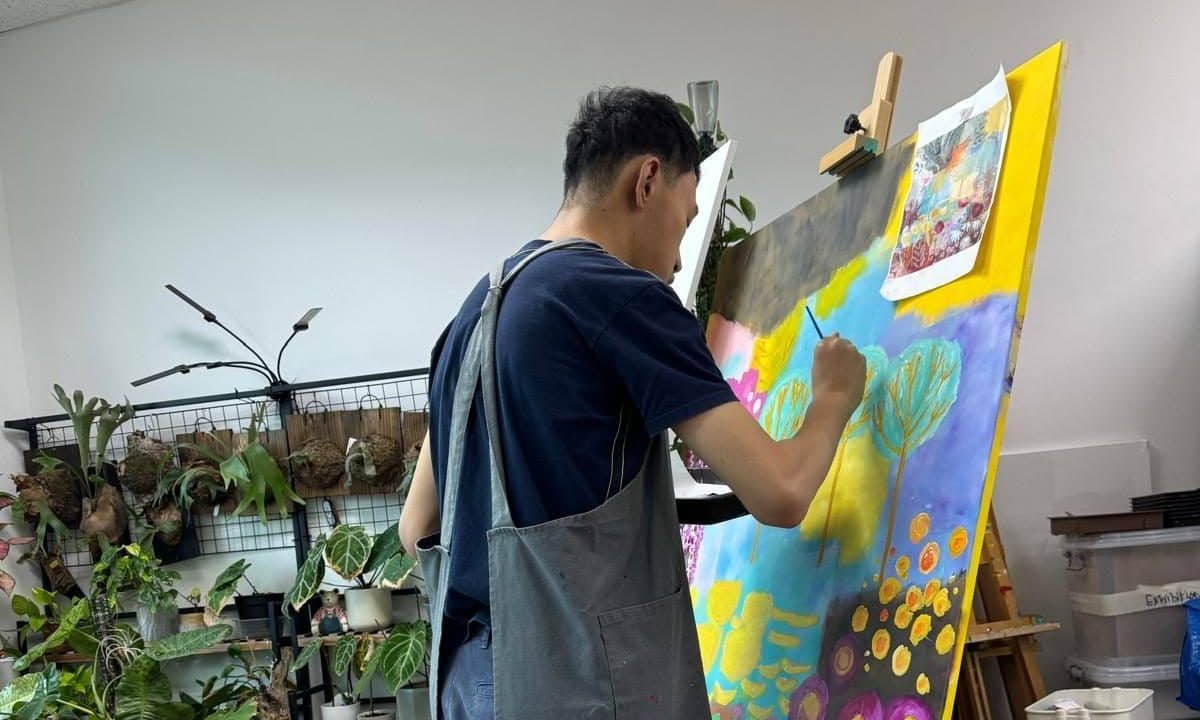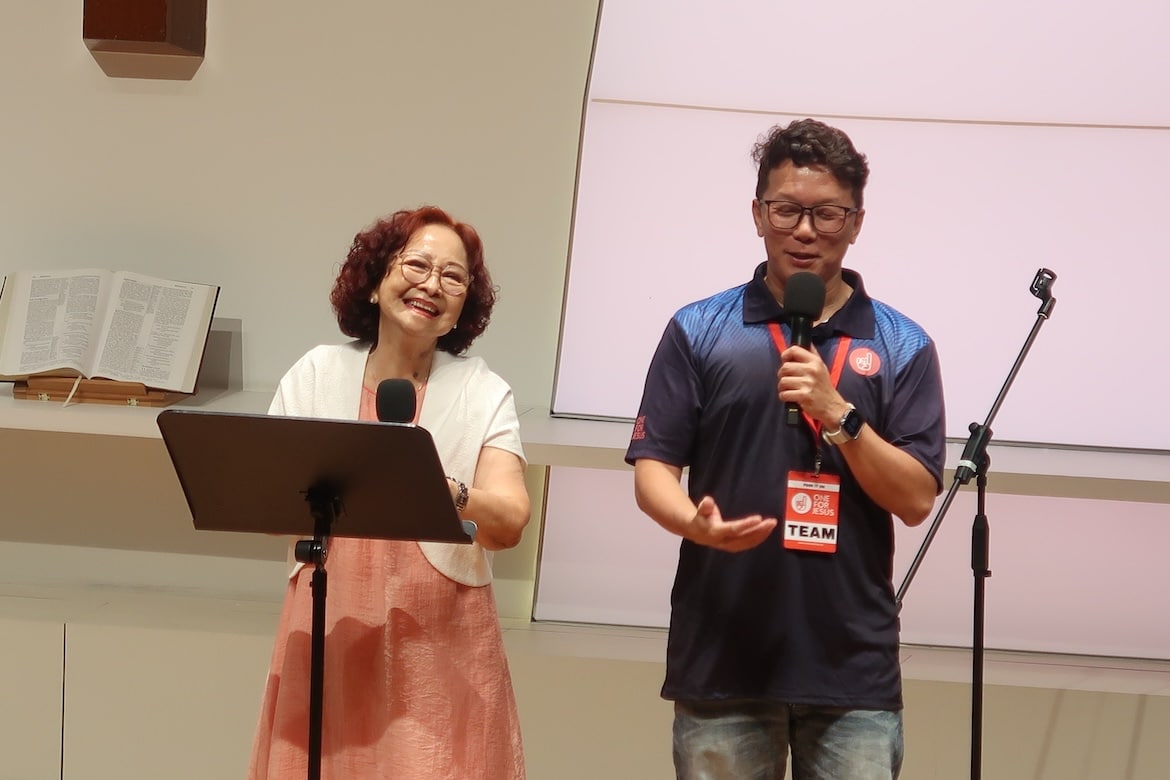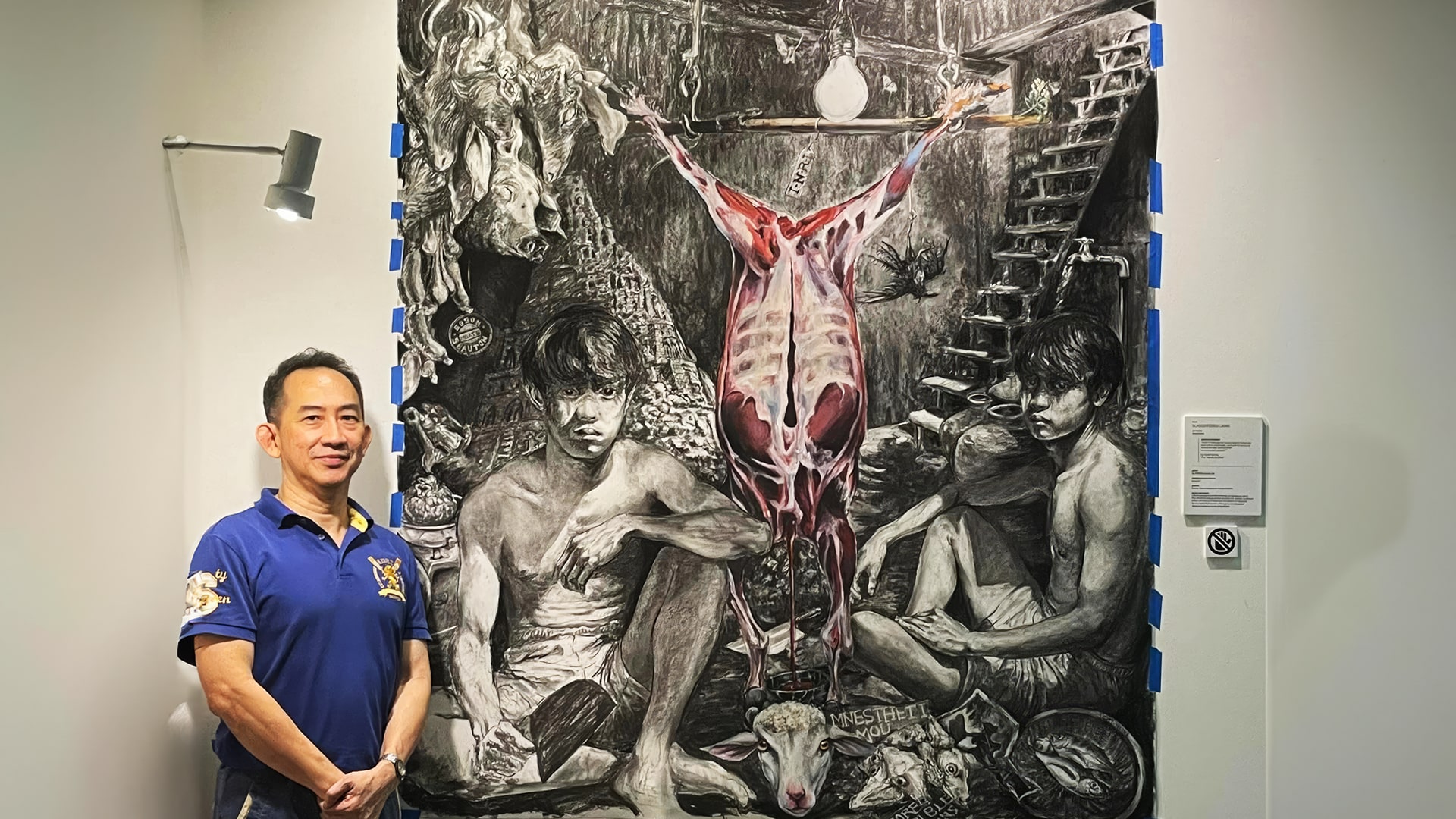
An re-enactment of a priest lighting the menorah, a Jewish symbol representing the Tree of Life in the garden of Eden. But it is more than just an icon; the menorah is also a representation of Christ, writes Galven Lee from Sound of Art. Photo by the Mikdash Education Centre.
Throughout history, we see God wooing His people. God gave His chosen people signs and symbols of Eden. They serve as a reminder of the perfect relationship He once had with His people and His desire to restore and reconcile us with Him.
We either live in the fullness of God’s presence, or not at all. We walk with God in the garden of Eden, like Adam and Eve did, or we live like we have been banished from it.
Hidden within
The menorah is one such symbol that God gave the Jews to remember Him. It is unique to the Jewish culture: Designed by God for the worship of God.
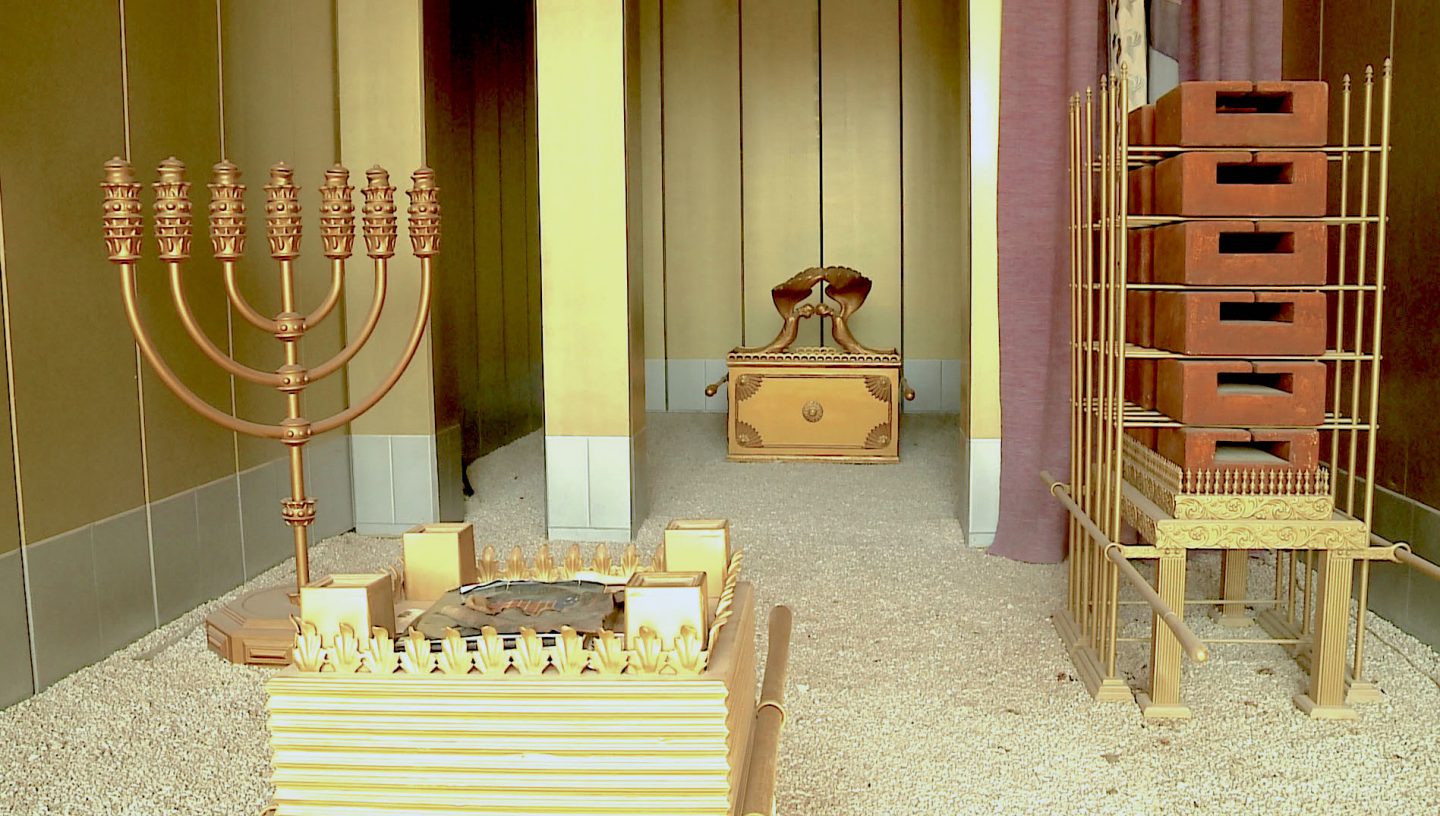
In the Bible, the menorah (left) is a seven-point lampstand of pure gold. It was used in the Tabernacle set up by Moses in the wilderness and later in the Temple in Jerusalem. This life-sized replica of the Tabernacle is in Ariel, Israel, with the Altar of Incense (foreground), the Ark of the Covenant (background) and the Table of Showbread (right). Photo from Eshel Hashomron Hotel, Israel.
Immediately after God brought the Israelites out of Egypt, He gave them moral laws and specified His heavenly designs for temple worship. God gave the designs for the Tabernacle, Ark of the Covenant, the menorah and many other laws about ritual worship.
The sacred lampstand was hidden from public view. It remained inside the Tabernacle which only select priests could enter at specific times of the day. God was inaccessible because He is holy and pure but we are defiled – “in sin my mother conceived me” (Psalm 51:5) and we also continually violate God’s laws.
Tree of life
When God gave the design of the menorah, He was very precise with its features (Exodus 25:31-32).
God is always intentional about His designs which are full of symbols. These symbols help us understand God better, to “serve the copy and shadow of the heavenly things, as Moses was divinely instructed when he was about to make the tabernacle” (Hebrew 8:5 NKJV).
The seven-lamp menorah consists of a number of organic features, including a base, shaft, six branches, leaves, petals, almond blossoms and lamps. In the Jewish tradition, the menorah is reminiscent of the Tree of Life in the garden of Eden.
After Adam and Eve sinned, they were banished from the Garden of Eden.
In the Jewish tradition, the menorah is reminiscent of the Tree of Life in the garden of Eden.
They were prevented from eating from the Tree of Life in Eden and God set a cherubim to protect it, lest they eat of it and live forever (Genesis 3:23).
In the same way, God gave instructions for the Jews to encamp outside the Tabernacle; they could not enter His presence. The entrance of the Tabernacle faced East, just as Adam and Eve left Eden toward the east.
In the same way that Adam and Eve were not allowed access to the Tree of Life, the Jews were not allowed access to the menorah within the Tabernacle.
But when God sent Jesus to die on the cross for us, Jesus became for us, our Tree of Life (Revelation 22:14) and our Menorah (John 15:5). In the words of Apostle Paul, we “being a wild olive tree, were grafted in among them, and with them became a partaker of the root and fatness of the olive tree” (Romans 11:17, NKJV).
Light of Christ
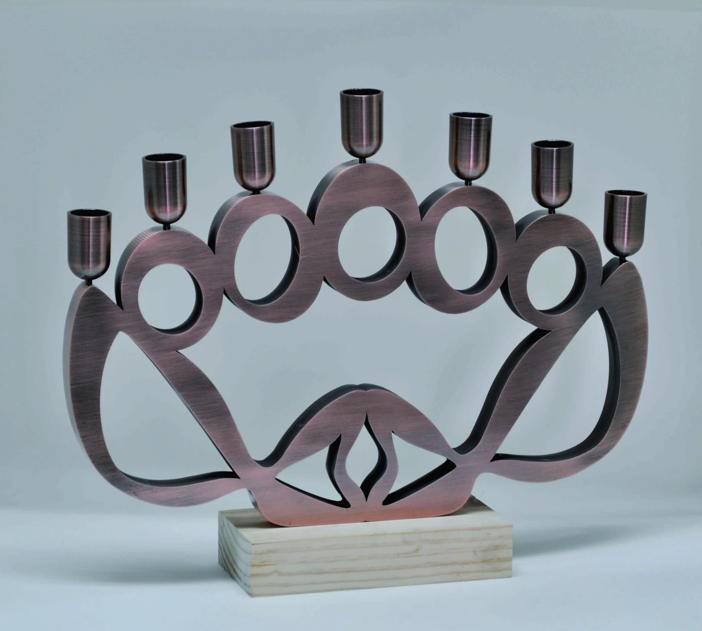
The Five Loaves and Two Fish Menorah by Mann Chow is made of steel, zinc, alloy and wood, based on the miracle in the Bible where Jesus fed 5,000 people in His Mercy. Photo by Sound of Art.
Not only is Jesus the Tree of Life, He is also the Light of the world. Jesus comforts us His disciples “I am the light of the world. He who follows Me shall not walk in darkness, but have the light of life” (John 8:12).
Jesus can multiply the little that we offer Him to feed His sheep.
When we, as branches, are connected to Jesus the True Vine, we will have light. We can cling on to God’s promise that His “word is a lamp to my feet and a light to my path” (Psalm 119:105). Jesus gives us clarity about what is holy and profane. He guides us in good works, gives us the words to speak and reveals heavenly wisdom.
Unfortunately, many people live without Jesus’ light. The only light they might have is Jesus’ light in us. That is why Jesus charges us to “let your light so shine before men, that they may see your good works and glorify your Father in heaven.” (Matthew 5:16)
Loaves and fish
How then do we let our “light so shine before men”? After all, we know that apart from God we can do nothing.
The answer is to give Jesus our five loaves and two fish (John 6:1-14).
In the days of Jesus, five barley loaves and two fish were a child’s meagre meal, not a sumptuous feast. Take note, the child gave up his lunch, knowing full well that he would go hungry.There was no extra for sharing. He did not give out of his excess; he gave up his necessities.
Mind you, Jesus wanted to feed 5,000 men, plus women and children!
But Jesus multiplies what we offer Him to feed His sheep. That is how we can bring light to others in a dark world.
So let us meditate on God’s love for us; how He reconciled us with Himself through Christ and gave us access to the Tree of Life and the menorah.
Many in the world, including those we love, are still living outside of Eden, severed from the Tree of Life, walking in darkness. We can invite them on this pilgrim’s journey to the Tabernacle to receive everlasting life and be grafted into the True Vine.
We can invite them to receive Light so that they, too, can walk in God’s protection.
We are an independent, non-profit organisation that relies on the generosity of our readers, such as yourself, to continue serving the kingdom. Every dollar donated goes directly back into our editorial coverage.
Would you consider partnering with us in our kingdom work by supporting us financially, either as a one-off donation, or a recurring pledge?
Support Salt&Light